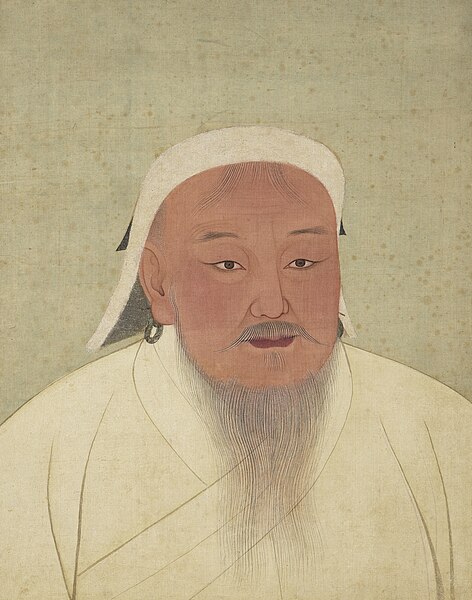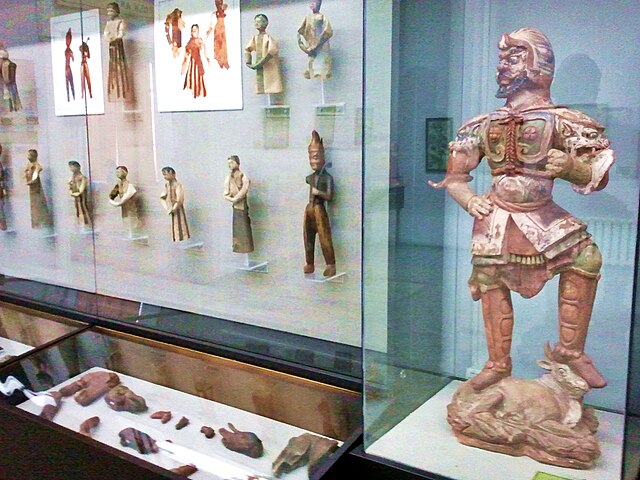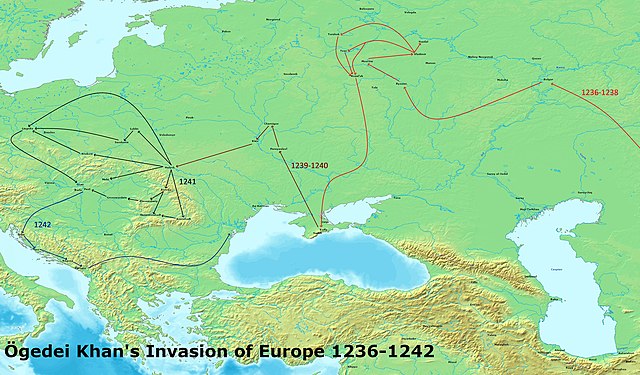The Mongol Empire of the 13th and 14th centuries was the largest contiguous empire in history. Originating in present-day Mongolia in East Asia, the Mongol Empire at its height stretched from the Sea of Japan to parts of Eastern Europe, extending northward into parts of the Arctic; eastward and southward into parts of the Indian subcontinent, attempted invasions of Southeast Asia, and conquered the Iranian Plateau; and westward as far as the Levant and the Carpathian Mountains.
Mongol tribes during the Khitan Liao dynasty (907–1125)
The Old World on the eve of the Mongol invasions, c. 1200
Genghis Khan, National Palace Museum in Taipei, Taiwan
Genghis Khan ascended the throne in the Ikh Khuraldai region in the Onan river, from the Jami' al-tawarikh.
Mongolia is a landlocked country in East Asia, bordered by Russia to the north and China to the south. It covers an area of 1,564,116 square kilometres, with a population of just 3.3 million, making it the world's most sparsely populated sovereign state. Mongolia is the world's largest landlocked country that does not border a closed sea, and much of its area is covered by grassy steppe, with mountains to the north and west and the Gobi Desert to the south. Ulaanbaatar, the capital and largest city, is home to roughly half of the country's population.
7th-century artifacts found 180 km (112 mi) from Ulaanbaatar
1236–1242 Mongol invasions of Europe
Genghis Khan, the first Mongol Emperor
The eighth Jebtsundamba Khutuktu, Bogd Khaan








